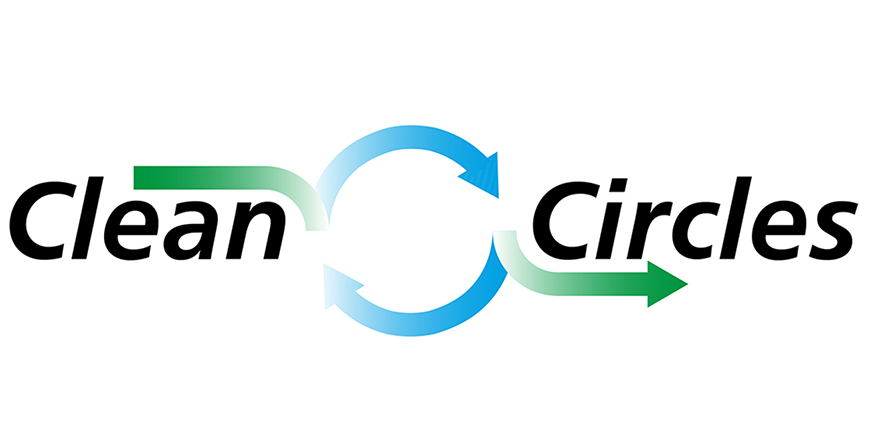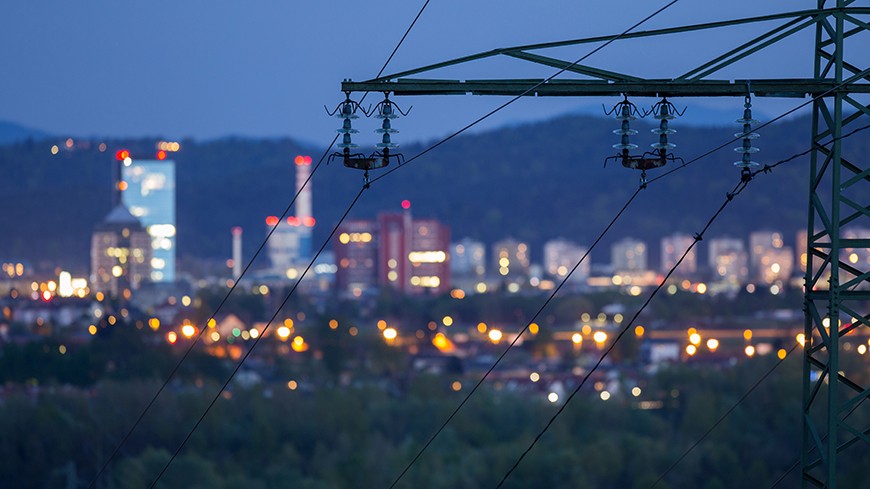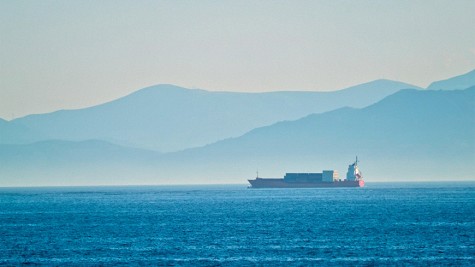1. The comprehensive cycle assessment
What potential does iron have as a carbon-free and environmentally friendly energy carrier in the context of a future circular economy that emphasises recyclability alongside renewable energy? We provide a comprehensive assessment of the iron inventory required to retrofit coal-fired power plants worldwide.
By introducing iron as an recyclable energy carrier into the cycle only once, our findings support the feasibility of achieving a 20-year transition period, taking into account the additional iron ore mining necessary for implementation. Moreover, we highlight the synergies between the recycling of iron oxides through chemical reduction and the production of raw iron for green steel making. These processes share similar reduction capacity requirements, underscoring the viability of an iron-based circular energy economy.
In addition, green steel making is considered a “no-regret” application for green hydrogen and is therefore expected to be established in the next decades(s). Currently, the primary challenge lies in securing a consistent supply of green hydrogen for reduction processes. Nonetheless, given the global investments in green hydrogen technologies, we anticipate that this bottleneck will be addressed, further advancing the prospects of a sustainable iron-based circular energy system.
P. Debiagi, R.C. Rocha, A. Scholtissek, J. Janicka, C. Hasse: Iron as a sustainable chemical carrier of renewable energy: Analysis of opportunities and challenges for retrofitting coal-fired power plants, Renewable and Sustainable Energy Reviews 165, 2022.
2. Analysis of supply chains
We present a comprehensive techno-economic assessment focusing on long-distance energy supply chains for carbon-free electricity generation, highlighting two promising zero-carbon energy carriers: hydrogen and iron. The assessment encompasses three key dimensions – thermodynamic efficiency (energetic assessment), CO2 emissions (environmental assessment), and the levelised cost of electricity (LCOE, economic assessment).
Potential trade routes between energy-exporting nations such as Morocco, Saudi Arabia, and Australia and energy-importing countries like Germany and Japan are investigated. To provide a holistic view, the study provides sensitivity and uncertainty analyses, pinpointing major cost drivers, and offers a comparative analysis against conventional fossil fuels. Green iron has the potential to become an important energy carrier for long-distance trade in a globalized clean energy market.
Key Highlights
- Energetic efficiencies: Green iron demonstrates energy efficiencies on par with green hydrogen.
- Transport and storage: In cases of short-distance transport and immediate usage, hydrogen may present a competitive advantage due to its direct applicability compared to the processing steps needed in an iron cycle. However, for long-distance transport and extended storage durations, iron proves advantageous, leveraging established transport and storage technologies.
- Infrastructure retrofitting: Iron offers the advantage that existing infrastructure can be repurposed, making it a compelling option for the transition to zero-carbon energy.
- Cost competitiveness: The study suggests that, with the realization of their techno-economic potentials, both iron and hydrogen have the potential to become cost-competitive with fossil fuels in the energy market.
J. Neumann, R. C. Rocha, P. Debiagi, A. Scholtissek, F. Dammel, P. Stephan, C. Hasse: Techno-economic assessment of long-distance supply chains of energy carriers: Comparing hydrogen and iron for carbon-free electricity generation, Applications in Energy and Combustion Science 14, 2023.
3. Repurposing coal-fired power plants
We present a meticulous retrofit study aimed at adapting and optimizing state-of-the-art coal-fired power plants in the 800-MW class. We utilize a model that balances all material and energy fluxes within the system. Particular emphasis is placed on critical components, such as the burner system and the system's heat exchanger.
Key Highlights
- Component reusability: Our analysis demonstrates the feasibility of reusing major components like the steam generator and steam cycle with moderate modifications. However, certain elements, such as the fuel feeding system, burners, and dedusting system, necessitate redesign.
- Efficiency gains: The retrofitted power plant showcases an efficiency improvement of approximately 1–2% when compared to its coal-fired counterpart. This enhancement is primarily attributed to reduced internal energy consumption from auxiliary systems. We have eliminated the need for equipment like mills and desulphurisation systems, and the possibility of omitting the denitrification system exists. Additionally, we have achieved significantly higher heat transfer coefficients due to enhanced thermal radiation of the particles. As a result, exhaust gas temperatures decrease, leading to increased boiler efficiency.
- Overcoming limitations: Our design modifications enable us to circumvent previous constraints, such as addressing sulfur-related dew point undershoots in the flue gas segment and adhering to maximum temperatures at the mills in the air segment. Consequently, we can consider higher air preheating temperatures, contributing to the plant's overall efficiency.
J. Janicka , P. Debiagi, A. Scholtissek, A. Dreizler, B. Epple, R. Pawellek, A. Maltsev, C. Hasse: The potential of retrofitting existing coal power plants: A case study for operation with green iron, Applied Energy 339, 2023.
4. The potentials of partner countries: example Morocco
What is the potential of Morocco as partner country for the European Union (EU)? Which challenges and chances are associated with a partnership in green energy trade?
The war in Ukraine and the looming threat of climate change are driving the strategic need to diversify sources of energy, including renewables. Therefore, the European Union aims to develop energy relations with non-EU member states, and Morocco has become a key priority in this regard. As such, hydrogen and energy transition policies include complex relations to partners, aspects that are also relevant for iron as an energy carrier. Against this background and relevance of such energy partnerships, researchers from Clean Circles have published a study on the potentials and risks of a hydrogen partnership between Morocco and the EU.
Both Brussels and Rabat are pursuing ambitious green policies and cooperation initiatives, including on hydrogen. Drawing on theories of international institutions and political economy, the article analyzes hydrogen-related relationship patterns and explains demand and supply factors as drivers of institutionalized energy cooperation. The researchers from Clean Circles examine the EU’s hydrogen approach and development, its relations with Morocco, and the political interests of both sides.
Key Highlights
- Salience of energy partnerships: The Russian invasion of Ukraine and the debate on energy dependence show the relevance of critically assessing green energy partnerships.
- General framework conditions important: The energy transition requires institutionalized partnerships that include a multitude of political and economic actors.
- Morocco as key partner: Morocco constitutes a key partner for the European Union (EU) due to its high potential for renewable energies, low production costs, geographic proximity, and already developed and intense ties to Europe.
- Demand can be met by supply. The study shows that considerable demand by the EU can be met by production in Morocco.
- Political and economic challenges remain: The study concludes that specific challenges for the partnership exist. These include the need to further intensify relationships, the requirement to address diverging political understandings on both sides, and a ramp-up of the green energy market more generally.
F. Plank, Friedrich, B. Daum, J. Muntschick, M. Knodt, C. Hasse, I. Ott, A. Niemann: Hydrogen: Fueling EU-Morocco Energy Cooperation? Middle East Policy, 30(3). 2023; 37-52.
Further reading: Studies from TU Eindhoven
Metallic energy carriers are also investigated in multiple studies from TU Eindhoven.
Dirven et al. have assessed various metal powders to be used as dense energy carriers:
“In this study the authors narrow down on four readily available promising metal energy carrier candidates: aluminium, silicon, iron and zinc. Based on static power generation the authors estimate amounts required, transportation, cycle efficiency and physical explosion hazards. The scale required for transportation is much larger than in the current metal powder industry. The shipping requirements are comparable to coal. The handling hazards are only serious for aluminium. Iron and silicon emerge as the materials of choice.”
L. Dirven, N.G. Deen, M. Golombok: Dense energy carrier assessment of four combustible metal powders, Sustainable Energy Technologies and Assessments 30, 2018.
Iron Power Ecosystem – vision document
The cost analysis results of a metal fuel supply chain show cost-competitive potential to decarbonise high temperature heat generation, a study from Metalot shows. The data form the basis for the vision document on their Iron Power ecosystem.
This vision document provides an overview of the iron power technology and ecosystem development. It takes a closer look at the application and potential, and its current status and development roadmap. Iron power is an economically attractive method of importing renewable energy. To illustrate this, the levelised cost of energy (LCOE) for the iron power value chain is calculated for several potential industrial end users in the Netherlands. It is then compared to alternatives. The LCOE of imported iron power is within the range of hydrogen import and local hydrogen production. For all investigated cases, the hydrogen production is the major cost item of the LCOE. The ease of storage and transport of iron powder compared to other energy carriers outweigh the capital cost required for the iron powder batch. Iron powder transportation and storage contribute marginally to the LCOE, suggesting that it is cost-efficient to produce the energy carrier close to a cheap hydrogen source. In order to introduce iron power in the energy system, a new value chain needs to be set up. To achieve this, collaboration between governments, knowledge institutions, business partners from the industry, and trading companies is essential. To guide coordinated technology development and implementation efforts, a roadmap is planned.
T. Hajondes van der Meulen, T. van Leeuwen, H. Zondag: A feasibility study – Cost analysis of high temperature heat supply via imported metal fuel (Fe).










